Quick: What's the best biceps move? If you said, "all of them," you need a little help in exercise selection. We combine science with experience to guide you on the ultimate quest for bigger arms!
Over the years, a number of studies have sought to investigate the best biceps exercises. It might surprise you at first—after all, have you ever read an article about the best way to fill out the sleeves of your lab coat? But on the other hand, you know the first thing you'd do if you ever got access to an EMG machine would be to hook it up to your guns. Be honest.
So what's the usual winner? The concentration curl, a staple in the bodybuilding regimens of golden era lifters like Arnold Schwarzenegger and Lou Ferrigno.1 But here's the catch: We've never met a single bodybuilder who whole-heartedly agreed.
Why the discrepancy? For one, experienced lifters know that while muscle activation matters, it isn't the only thing that matters. At some point, the amount of weight you can move counts, too! Otherwise, exercises like leg extensions, which can have a higher EMG score for quads than squats and leg press, would dominate the leg workouts of champion bodybuilders. Of course, squats are the better move—and not just for quads.
So be forewarned: There's a lot of info—and a lot of personal judgement—backing up our list of the best biceps moves, just like there was when we rated the best back, leg, triceps, and chest exercises. You don't have to consider it a definitive list; just take it as the start of the discussion, and then go start investigating for yourself!
Why it's on the list: The shoulder-width curl engages the short and long heads of the biceps equally, you can really pile on the weight, and you don't have to sit there endlessly working one arm at a time. How many more reasons do you need? If you're only going to do one biceps exercise, make it this one.
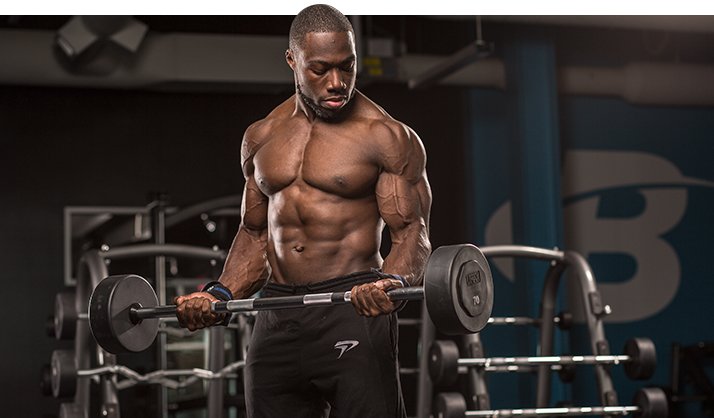
Just don't expect the studies to agree wholeheartedly; the gold-standard EMG study by Boeckh-Behrens from 2000, and a more recent ACE study from 2014, rank this exercise about halfway down their lists. We favor it because of the increased potential for loading, and the ease with which you can alter your grip width to change the emphasis. You can also switch from a straight bar to an EZ-bar to take it easy on your wrists.
So do it—and do it as many ways as you can! Wider can give a little more emphasis to the short head, and a narrow grip hits the long head. But be warned: A narrow grip reduces overall muscle activation by nearly 15 percent, so don't use this grip exclusively.2
In your workout: Do it first, at the beginning of your biceps workout, so you can really challenge yourself with weight. For a bit more of a strength stimulus, choose a weight you can handle for about 6-8 reps. Warning: It's really easy to cheat on this movement. Keep it strict for the most part, especially when you're going heavy.
Why it's on the list: The second-rated biceps exercise in the ACE study and third in the Boeckh-Behrens, this movement is a lot like the standing barbell curl at first glance. After all, they're both bilateral movements in which you take a shoulder-width, underhand grip on the bar. What makes it different is that the angle of loading comes from down and forward, giving you constant tension on the muscle through the full range of motion.
Essentially, that means you can't rest at the bottom or the top, even if you let your elbows drift forward (which you shouldn't do, as it means your front delts are assisting).
In your workout: Because it's so similar to the barbell curl, pick one or the other. If you're doing it first in your workout, go fairly heavy, and use a challenging weight.
Why it's on the list: Is this really any different than a barbell curl? That's up to you. Yes, you can just do a repetitive movement (we don't recommend it), but the real value of this exercise is that it can be done a number of ways: standing or seated on a vertical or incline bench, with both hands or alternating sides, rotating wrists into a Zottman curl, or keeping them face up. In short, you have options.
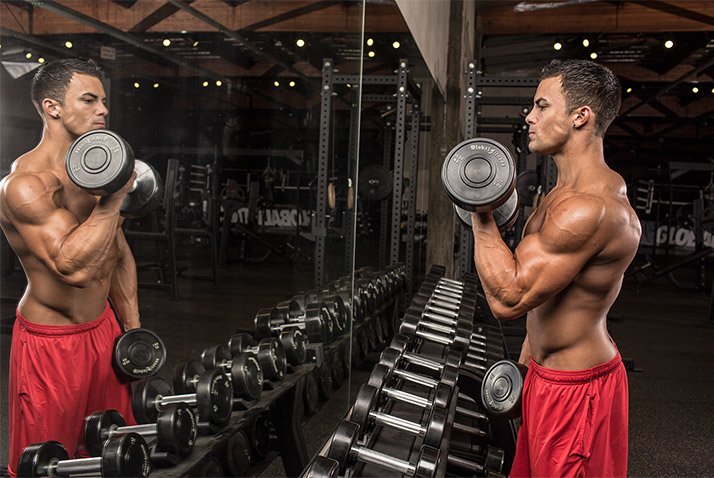
In your workout: If you're doing these after barbell or cable curls, emphasize the difference by performing a wrist-rotation version, or extending the set by switching from bilateral to unilateral as you fatigue during a set. If you feel your reps getting sloppy, really hammer the negatives. It's been shown that the negative portion can elicit up to 40 percent more muscle activation during some curling movements.2
Why it's on the list: Here's your first multi-joint exercise on the list. As with any underhand-grip back exercise, the biceps are heavily recruited.3 The problem with the bodyweight version is that if you're very strong, you may be able to do 20-30 reps, so using added weight can push you back into a muscle-building 8-12 rep range. The ACE study ranks this third, but that version was unweighted.
Even though both chin-ups and pull-ups have a high degree of elbow flexion, research has shown that chin-ups (underhand grip) have a greater range of motion in the elbows.4 More ROM equals more biceps involvement!
In your workout: If you train back with biceps, this exercise could make a great bridge movement between the two body parts. If you don't have a belt to add weight and you're strong on this movement, consider pushing it later into your biceps workout, after fatigue has begun to set in.
Why it's on the list: It's another multijoint movement in which you can go very heavy, and with the reverse grip, the biceps are heavily engaged. It's not really the kind of exercise you'd do on a biceps-only day, but it's another one that makes a good bridge between back and biceps.
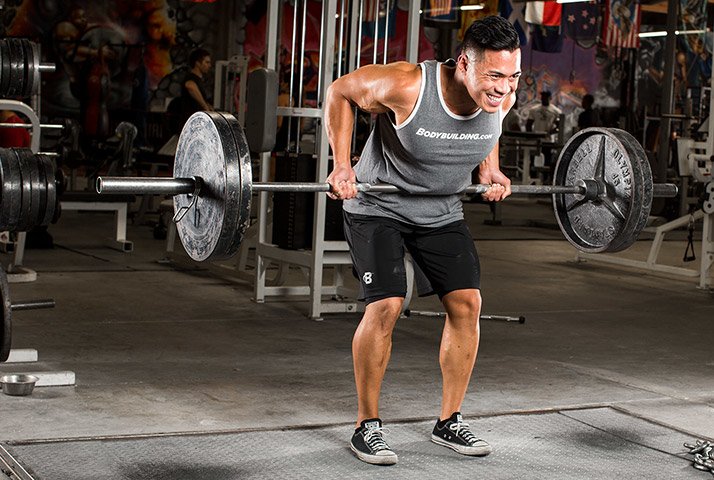
In your workout: Include it in your back routine, or as a bridge exercise when training back and biceps together. Go fairly heavy, and train in the muscle-building rep range.
Why it's on the list: Curls with a palms-facing or neutral grip do more than just hit the biceps; they also heavily recruit the brachialis, a muscle that doesn't get measured on EMG studies because it's beneath the biceps. Increasing the girth of the brachialis can make your entire arm larger. With the cable, you get the benefits of constant tension throughout the range of motion, giving it a slight edge over the dumbbell hammer curl.
In your workout: None of the other exercises on our list includes a neutral grip, so it can be added to just about any routine. Some elbow-flexion exercises have even demonstrated greater biceps activation, especially on the long head, when using a hammer grip opposed to a supinated grip.2 Do it toward the latter half of your arm workout.
Why it made the list: An exercise that emphasizes just one of the two biceps heads isn't going to score high on total biceps EMG activation—and it didn't in the ACE study—but this one may theoretically hit the long head particularly well. The incline-bench curl elongates the biceps and increases the stretch, creating an inefficient starting position for the muscle fibers. This means a greater amount of effort must be applied to the load to generate speed and initiate a contraction. Theoretically, the long head gets the benefit of the less-efficient starting position, with greater muscle recruitment necessary than in other arm positions.
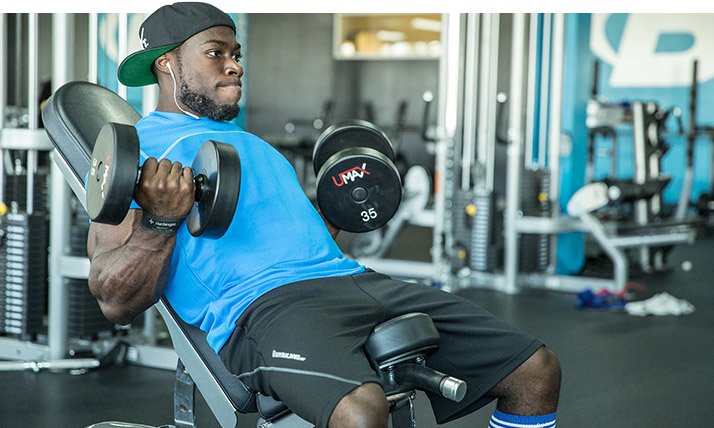
In your workout: Perform these after an exercise like standing curls, in which both biceps heads are targeted with heavy weight. Because of the "overstretched" arm position at the bottom of the movement and its inefficiency, you won't be able to toss up the really big weights, so it's best done later in your training session.
Why it's on the list: Hey, there's a reason the concentration curl fares so well on muscle-activation studies. The position of the torso has something to do with that, but likely so does the increased mind-muscle connection many people report experiencing. There is actually some emerging evidence surrounding the ability of the mind-muscle connection to garner greater increases in hypertrophic training adaptations.3
In your workout: Because of the restricted loading capability, it will be best to push this toward the end of your workout, when you're already somewhat fatigued. Pick a weight just heavy enough that you're failing at 10-12 reps.
Why it's on the list: There are many versions of the preacher curl: machine, bar, dumbbell, cable, one arm or two, standing or seated. You can even curl off the straight end of the bench, called a Scott curl after the first Mr. Olympia, Larry Scott. Regardless of which variation you choose, you'll get a serious biceps pump!
As with other movements that start from a stretched position, you get peak muscle activation and forces during the lower-third of the concentric movement.4 As the wrist moves closer to the elbow joint and eventually past it, it becomes a more advantageous position for the muscle, meaning it doesn't have to work as hard. This is one reason the cable might be the best implement to use here.
In your workout: Since your arms are against a bench, it's a very strict movement that doesn't allow a lot of cheating. Hence, this movement is best done toward the latter half of your workout. You can program it as a long-head movement, since it could theoretically emphasize that head, although no study has verified this.
Why it's on the list: In contrast to strict barbell curls, where you keep your elbows pinned at your sides, you'll actually push them backward, keeping the bar close to your torso as you bring it up. This reduces the range of motion, so don't expect to take it up very high. Because the bar moves vertically up and down, it can also be done on a Smith machine—seriously, try it!
In your workout: If you're looking to make this tenth-ranked exercise a five-star winner, focus on the negative part of the reps. You'll need a workout partner. Start with the bar in the top position, with a very heavy weight, and take about 3-5 seconds to lower it to the bottom. Your partner should then help you get it back to the top. Repeat for 5-8 reps.
If you're doing negatives, do this move first in your workout. Otherwise, it can be plugged in anywhere from the middle to the end.
REFERENCES
- ACE Study Reveals Best Biceps Exercises. (2015, August). Retrieved from http://www.acefitness.org/acefit/expert-insight-article/47/4947/ace-study-reveals-best-biceps-exercises/.
- Boeckh-Behrens, W. U., Beier, P., & Buskies, W. (2001). Fitness Strength Training: The Best Exercises and Methods of Sport and Health.
- Youdas, J. W., Amundson, C. L., Cicero, K. S., Hahn, J. J., Harezlak, D. T., & Hollman, J. H. (2010). Surface electromyographic activation patterns and elbow joint motion during a pull-up, chin-up, or perfect-pullup rotational exercise. The Journal of Strength & Conditioning Research, 24(12), 3404-3414.
- Oliveira, L. F., Matta, T. T., Alves, D. S., Garcia, M. A., & Vieira, T. M. (2009). Effect of the shoulder position on the biceps brachii EMG in different dumbbell curls. Journal of Sports Science and Medicine, 8(1), 24-29.
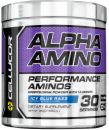

Nenhum comentário:
Postar um comentário